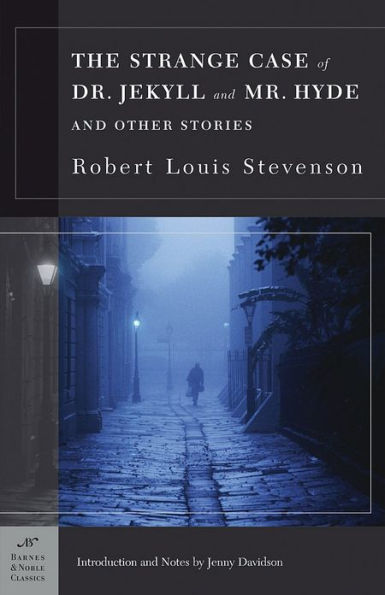Read an Excerpt
From Jenny Davidson’s Introduction to The Strange Case of Dr. Jekyll and Mr. Hyde and Other Stories
Robert Louis Stevenson’s novella The Strange Case of Dr. Jekyll and Mr. Hyde is at once a sharply conceived allegory about the psychological costs of living the respectable life and a thrilling page-turner as compelling as anything written by such modern masters of horror as Clive Barker and Stephen King. Published in January 1886, Stevenson’s story quickly became a best-seller on both sides of the Atlantic.
The American actor-manager Richard Mansfield purchased the copyright to Stevenson’s novella with the goal of maintaining exclusive rights for theatrical adaptation, but the copyright laws failed to prevent a host of other impresarios from mounting competing productions; one producer touring in New England advertised that his Mr. Hyde was so terrifying that he had to be kept chained in a boxcar on the way to the theater. Though the text of the adaptation, by playwright Thomas Russell Sullivan, would seem dated and melodramatic to modern readers—as does the trick photograph in which Mansfield’s Hyde crouches behind his Jekyll, ready to spring—the actor’s performance brought to life for his contemporaries all the most terrifying aspects of Stevenson’s story. First acted at the Boston Museum on May 9, 1887, as Mansfield’s biographer Paul Wilstach recounts, Jekyll and Hyde had immensely powerful effects on its audience: “Strong men shuddered and women fainted and were carried out of the theatre. . . . People went away from ‘Dr. Jekyll and Mr. Hyde’ afraid to enter their houses alone. They feared to sleep in darkened rooms. They were awakened by nightmare. Yet it had the fascination of crime and mystery, and they came again and again” (RichardMansfield, the Man and the Actor, pp. 146–147; see “For Further Reading”).
Spectators found it difficult to believe that Mansfield transformed himself without chemical assistance, and he was charged with using acids, phosphorus, or even an inflatable rubber suit to facilitate the transformation from Jekyll to Hyde. The truth of the matter, Wilstach goes on to say, was that “his only change was in the muscles of his face, the tones of his yielding voice, and the posture of his body” (pp. 147–148). The account of Mansfield’s friend and fellow actor De Wolf Hopper confirms the effectiveness of the performance. As the two men sat one evening in a darkened room at the Continental Hotel in Philadelphia, Hopper asked Mansfield what he did and how he did it: “‘And then and there, only four feet away, under the green light, as that booming clock struck the hour—he did it—changed to Hyde before my very eyes—and I remember that I, startled to pieces, jumped up and cried that I’d ring the bell if he didn’t stop!’” (Wilstach, p. 155).
The great Victorian actor Henry Irving soon invited Mansfield to bring his production to the Lyceum Theatre in London, and Jekyll and Hyde opened there on August 4, 1888. On the last day of August, however, an event took place that would transform the significance of Mansfield’s production and, indeed, of Stevenson’s story as well. The mutilated corpse of a prostitute was discovered in the East End of London, the first in a series of five or more murders attributed to the terrifying figure who would come to be known as Jack the Ripper. The Ripper cut his victims’ throats, sliced open their torsos, and removed their organs; he was suspected of having trained as either a butcher or a medical man.
As subsequent bodies were discovered, London went wild with fear. Reporters drew public attention to the extraordinary poverty and squalor of Whitechapel in the East End, where most of the murders took place, and pointed to the hypocrisy of a society that allowed such neighborhoods to exist in the face of the nation’s great prosperity, thereby encouraging the emergence of a monster like the Ripper. Amid riots and public frenzies, many citizens wrote letters to the newspapers and the police suggesting precautions that might be taken to prevent more murders. These suggestions ranged from providing better street lighting and giving policemen whistles as a rapid warning system, to arming prostitutes with revolvers, or even dressing up police officers as prostitutes and protecting their throats and torsos with metal corsets, perhaps attached to batteries that would electrocute the unwary attacker. Many of these letters singled out prominent members of society as suspects in the Ripper murders. At the peak of the frenzy the police received more than a thousand letters a week, and the actor Richard Mansfield was among those charged with being responsible for the Whitechapel murders. As Donald Rumbelow relates in his history of the crimes, “The writer accusing Mansfield had not been able to rest for a day and a night after seeing the performance, claiming that no man could disguise himself so well and that, since Mansfield worked himself up to such a frenzy on stage, he probably did the real life murders too” (The Complete Jack the Ripper, p. 124).


